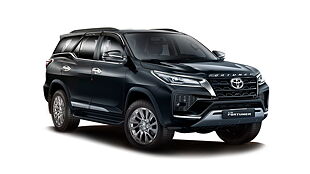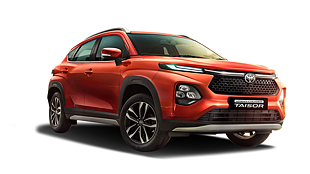What is it?

The fourth episode of the Maruti-Toyota cross-badging saga has begun in the form of the Toyota Rumion. It is a rebadged version of the Maruti Ertiga and uses the same exterior and interior design and powertrain option. In the larger scheme of things, the car exists as a way for Toyota to enter the budget end of the Indian car market, and consequently, for Suzuki to make inroads into locations where it doesn’t have a presence but Toyota does.
How is it on the outside?

Up front, Toyota has fitted the Rumion with a honeycomb grille with chrome surrounds and a chrome ring around the section under the number plate. These two visual changes make the Rumion look like a scaled-down version of the Toyota Innova Hycross. In the profile, you get a fan-like pattern for the top-spec version’s diamond-cut alloy wheels. Meanwhile, the rear remains unchanged, save for the different badging as compared to the Ertiga.

How is it on the inside?

Given that the Rumion is essentially a rebadged version of the Ertiga, it sports the same interior, layout, and position of elements but in a black-and-white scheme with beige upholst. You get the same 4.42m overall length and a wheelbase of 2.72m, thus putting it on par with the Kia Carens, Maruti XL6, and the upcoming Mahindra Bolero Neo Plus.
What's on the feature list?
The Toyota Rumion will be offered in the S, G, and top-spec V variants. The fully loaded V variant gets features like climate control with roof-mounted blowers for the second row, full-colour MID touchscreen infotainment with Apple CarPlay and Android Auto, connected car technology, height adjustment for the driver’s seat, power mirrors, and power windows.

In a variant-to-variant feature comparison, it is the equivalent of the VXi and the ZXi (O) variants of the Ertiga as the starting point and the top-of-the-line variants, respectively. Given Toyota’s reputation with MPVs, it should have little trouble moving the Rumion even if it comes at a price premium over the Ertiga.

On the safety front, the Rumion’s top-spec V variant gets four airbags, ABS with EBD, ESP, hill hold function, rear parking sensors with camera, front fog lamps, and ISOFIX child seat mounting points. However, at the time of the car’s unveiling, it had not been tested for the GNCAP safety rating.
What is it powered by?

The Toyota Rumion is offered with a 1.5-litre K-Series engine that can run on both petrol and CNG. The petrol-powered version produces 101bhp/136Nm and can be had with a five-speed manual or a six-speed torque converter automatic. With CNG power the output drops to 88bhp/121Nm and it can only be had with a five-speed manual. The official mileage stands at 20.51kmpl for the MT, 20.11kmpl for the AT, and 26.11kg/km for the CNG MT. These are the same figures as the Maruti Suzuki Ertiga on which the Rumion is based.
What about pricing and competition?

At the time of writing this first look, Toyota had not announced prices for the Rumion, but we expect an increase of Rs. 30,000 to Rs. 50,000 over the equivalent variants of the Ertiga. This means it is expected to be in the range of Rs. 9.15 lakh to Rs. 14 lakh (ex-showroom). It will rival the Maruti Suzuki Ertiga, Kia Carens, and the upcoming Mahindra Bolero Neo Plus in the Indian market.



























